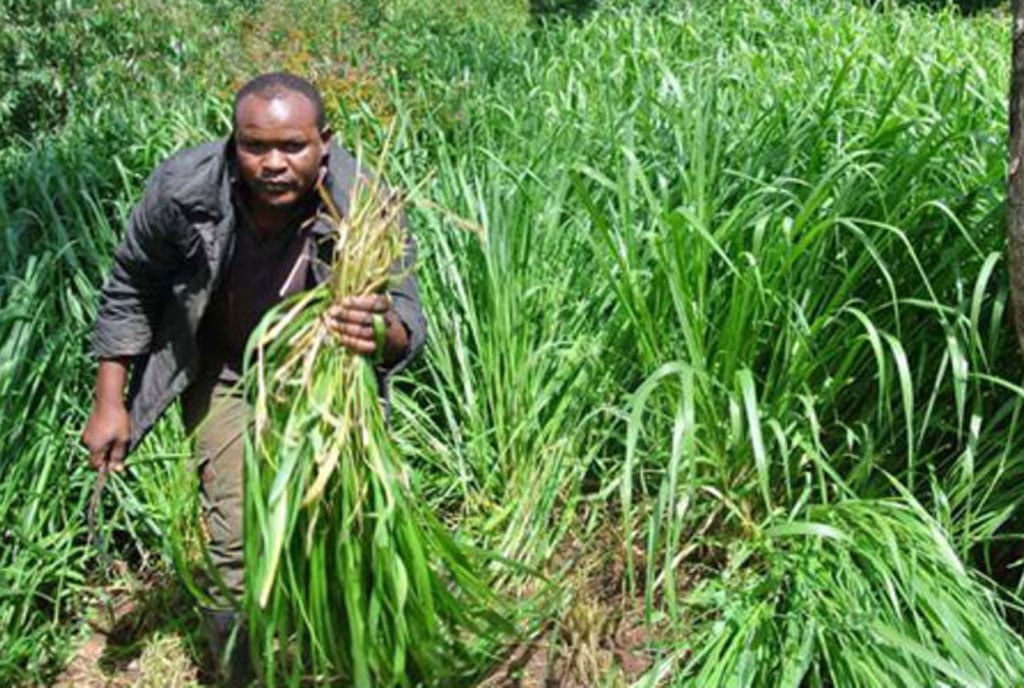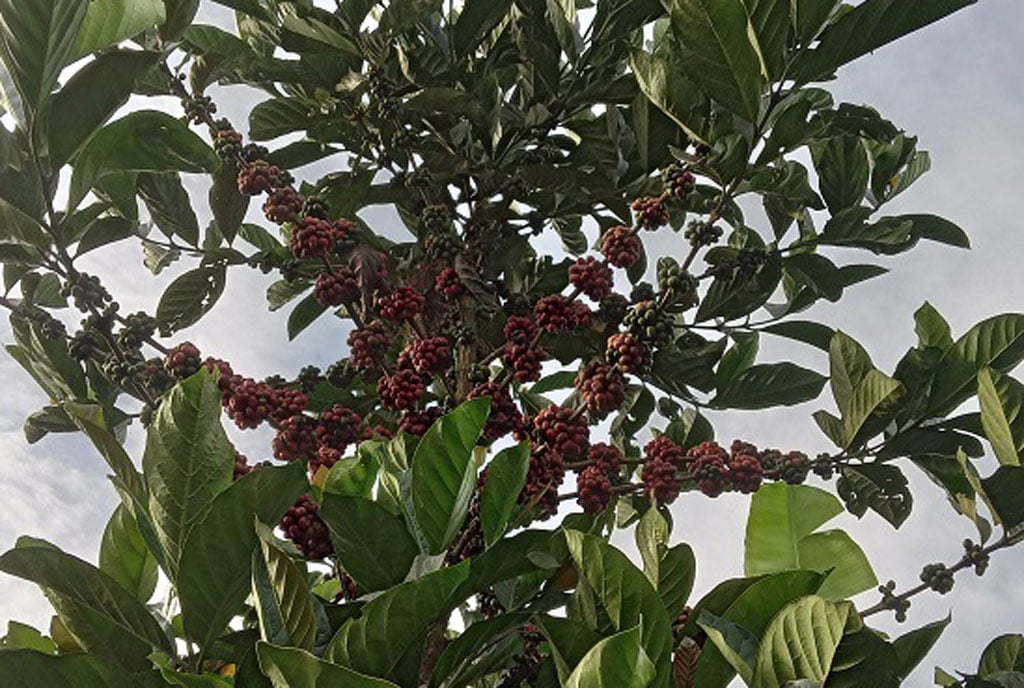Prime
Scientists develop new brachiaria grass species

The beauty of these new brachiaria grasses is that they allow farmers to boost meat and milk production while actually reducing methane emissions that contribute to global warming. PHOTO/NMG
What you need to know:
- To make it more effective, Napier grass is planted around the border of the intercropped cereal plants, to attract and trap the pests, thereby keeping them away from the food crop.
Livestock farming is one of the agricultural activities embraced by farmers in the country as income earning initiative.
However for farmers to get better breeds and their products ranging from beef and milk among others, there is need to feed them well with quality pasture.
The traditional methods of animal management is to let them roam on free range in the available grassland which is not tenable.
As such livestock scientists usually advice the farmers to feed their animals on a range of feeds including forage processed from various grass species, legumes species and mixture of feeds made from assorted products containing protein.
Background
The higher quality of forage farmers have available, the better the pasture quality should be to meet the nutritional needs of the animal herd.
This is the thinking of agronomists from the International Livestock Research Institute (ILRI) breeding high quality forage species in collaborations with their colleagues at the National Livestock Resources Research Institute (NaLIRRI) at Nakyesasa.
The scientists have specifically concentrated on breeding high quality seed of Brachiaria grass species under a four-year project which they intend to multiply and supply to farmers across the country.
This was revealed to stakeholders in a recent meeting where various scientific institutions conducting research under the umbrella body Consortium of International Agriculture Centre (CGIAR) merged to work under one office roof located at the National Agricultural Research Laboratories in Kawanda.
The specific institutions that caused the merger include Alliance Biodiversity International and International Centre for Tropical Agriculture (CIAT).
Breeding of brachiaria
Allen Morin an agronomist at NaLIRRI says they have started breeding various forage species which include chloris gayana, brachiaria, napier grass, sponsobolus pyramdalis panicum maximum, hyparrhenia rufa, pennisetum clandestinum and setaria anceps among others.
Some are bred for seed multiplication and others for forage processing for animal consumption.
Other animal feeds bred are legume forages such as Lablab, alfalfa, Rose Clover, pulses such as beans, trees such as calliandra calothyrsus.
Hover in this specific project, Allen and team are breeding brachiaria which she says is drought tolerant and can produce enough biomass in terms of quality and quality.
The seed were taken to forage seed bank in Colombia and kept there over a long period of time.
This particular species can be grown by farmers just like any other animal forage grass species. At the moment farmers are advised to access the seed of the grass from the gene bank centre in Kawanda at the NaLIRRI in Nakyesasa.
Best practices
Brachiaria grass does well in a wide range of climatic conditions. It is productive in areas with annual rainfall of above 700 mm and mean temperatures exceeding 19 degrees Celsius. It requires well drained deep soils.
Varieties
The available varieties grown in East Africa include Mulato II, Cayman, Cobra, Piata, Xaraes, MG-4 and Basilisk. It can be grown from seed or vegetatively propagated from root splits. Farmers are advised to purchase viable seeds from reputable dealers. Many farmers have been conned by unscrupulous merchants who claim to produce seeds on their farms.
Planting
For large quantity of seeds, farmers can plant directly in the field where they must sow the seeds in a well-prepared land in furrows of about 1 cm deep at a spacing of 50 cm between the furrows.
Cover the seeds lightly with soil using tree branches. If only small quantity of seeds is available, establish a nursery to minimise loss.
Prepare a nursery bed with good tilth. Raise the bed so that it is not waterlogged. Make furrows of about 1 cm deep and space at 5 cm from one furrow to the next. Plant the seeds evenly in the furrows and cover lightly with soil and water regularly. It is advisable to erect a shade or use mulch with dry grass to prevent direct sunlight on the bed and the young seedlings.
Remove the mulch after the seeds emerge from the soil. This is after 5-7 days. The seedlings are ready for transplanting after 8 - 10 weeks.
Plough and harrow the land during the dry season and plant at the onset of rains. It is the best option to establish the grass when seeds are not available. Get the splits from an established Brachiaria stand. Make sure the splits have roots and the tillers are actively growing. Use a spacing of 20 -30cm between plants and 50cm between rows.
Brachiaria can be planted either as pure-stand or intercropped with forage legumes such as Desmodium and Lucerne which contain high protein for livestock.
Weeding
Brachiaria produces a lot of foliage, which suppresses weeds when well established.
However, farmers should scout and control weeds manually during the establishment period and after every grass harvesting.
Harvest and utilisation
Brachiaria takes about 3 - 4 months to be ready for first harvest after planting but breeding for seed takes longer time of six years. Subsequent harvests can be made after every 8 – 10 weeks depending on climatic conditions and management. During harvesting the grass should but cut at about 5 cm above the ground using sickle or machete.
This way, it will take a shorter time to regenerate. Ensure you weed, manure, and water adequately after every harvest.
Feed Brachiaria to dairy and other animals such as sheep and goats as hay and rabbits as fresh green forage.
Benefits
It produces high forage biomass, it is high crude protein content, it is pest and disease resistant, it is drought tolerant, it establishes easily and it regenerates within a short time.
Crop rotation
Resting pastures allows plants to replenish food reserves and forages will not be able to re-establish new growth if there is no crop rotation done on the land.
Recovery time for pastures can range from 10 to 60 days depending on the season. While resting pastures, implement rotational grazing by either splitting a large pasture into several smaller fenced lots or move your cattle to a completely new area if you have the space.
Alfalfa
The beauty of these new brachiaria grasses is that they allow farmers to boost meat and milk production while actually reducing methane emissions that contribute to global warming.




